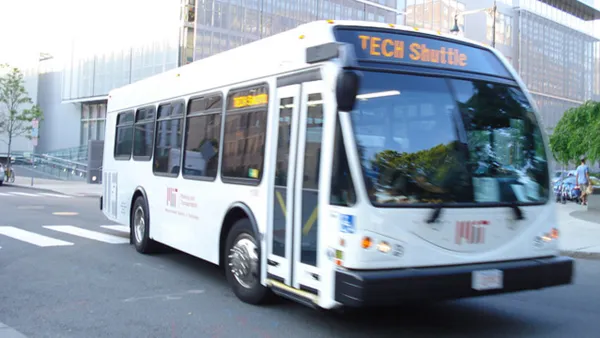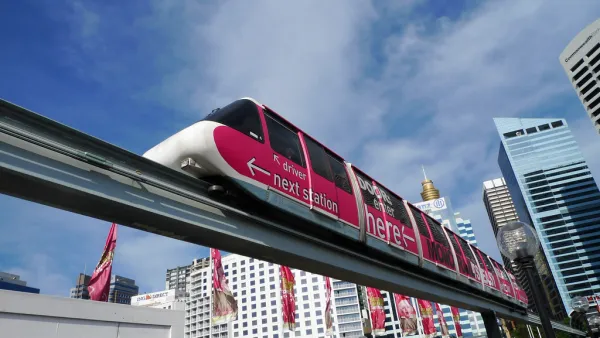Is the isolation of personal rapid transit truly viable for mass transit?
As the Shweeb takes Google's Project 10^100 prize in public transport innovation, Erica Schlaikjer of TheCityFix asks: "How much more isolated can we get, suspended in enclosed pods, watching vibrant street life whizzing by?"
She continues: "While the idea of adapting "a thrilling and innovative riding experience" to an urban setting is exciting (the Agroventures Park Shweeb ride can reach "up to 45 kilometers per hour and 60-degree swings on the bends,") it seems wasteful to seriously consider this technology as an "innovation" in public transportation, when there are so many other low-hanging-fruit solutions to improve the way people move around in cities.
Just considering the dollar cost per kilometer of infrastructure, the Shweeb seems less financially responsible than simply building more (or better) bike lanes, sidewalks or bus corridors -- all of which are relatively low-cost. Yes, the Shweeb would be cheaper than building a new metro or light rail system, but it still requires significant infrastructure to move just one person (or up to four people) at a time. Why not fund high-quality articulated buses that can transport a couple hundred passengers? If existing bus systems are costly, why not figure out ways to make them more economical, rather than creating a new type of mass transit? Or, if last-mile connectivity is the problem, why not invest in something like city-wide, high-tech, well-branded bike-sharing systems?"
Thanks to Garrett Bradford
FULL STORY: Google Awards $1 Million to Shweeb

National Parks Layoffs Will Cause Communities to Lose Billions
Thousands of essential park workers were laid off this week, just before the busy spring break season.

Retro-silient?: America’s First “Eco-burb,” The Woodlands Turns 50
A master-planned community north of Houston offers lessons on green infrastructure and resilient design, but falls short of its founder’s lofty affordability and walkability goals.

Delivering for America Plan Will Downgrade Mail Service in at Least 49.5 Percent of Zip Codes
Republican and Democrat lawmakers criticize the plan for its disproportionate negative impact on rural communities.

Test News Post 1
This is a summary

Test News Headline 46
Test for the image on the front page.

Balancing Bombs and Butterflies: How the National Guard Protects a Rare Species
The National Guard at Fort Indiantown Gap uses GIS technology and land management strategies to balance military training with conservation efforts, ensuring the survival of the rare eastern regal fritillary butterfly.
Urban Design for Planners 1: Software Tools
This six-course series explores essential urban design concepts using open source software and equips planners with the tools they need to participate fully in the urban design process.
Planning for Universal Design
Learn the tools for implementing Universal Design in planning regulations.
EMC Planning Group, Inc.
Planetizen
Planetizen
Mpact (formerly Rail~Volution)
Great Falls Development Authority, Inc.
HUDs Office of Policy Development and Research
NYU Wagner Graduate School of Public Service




























